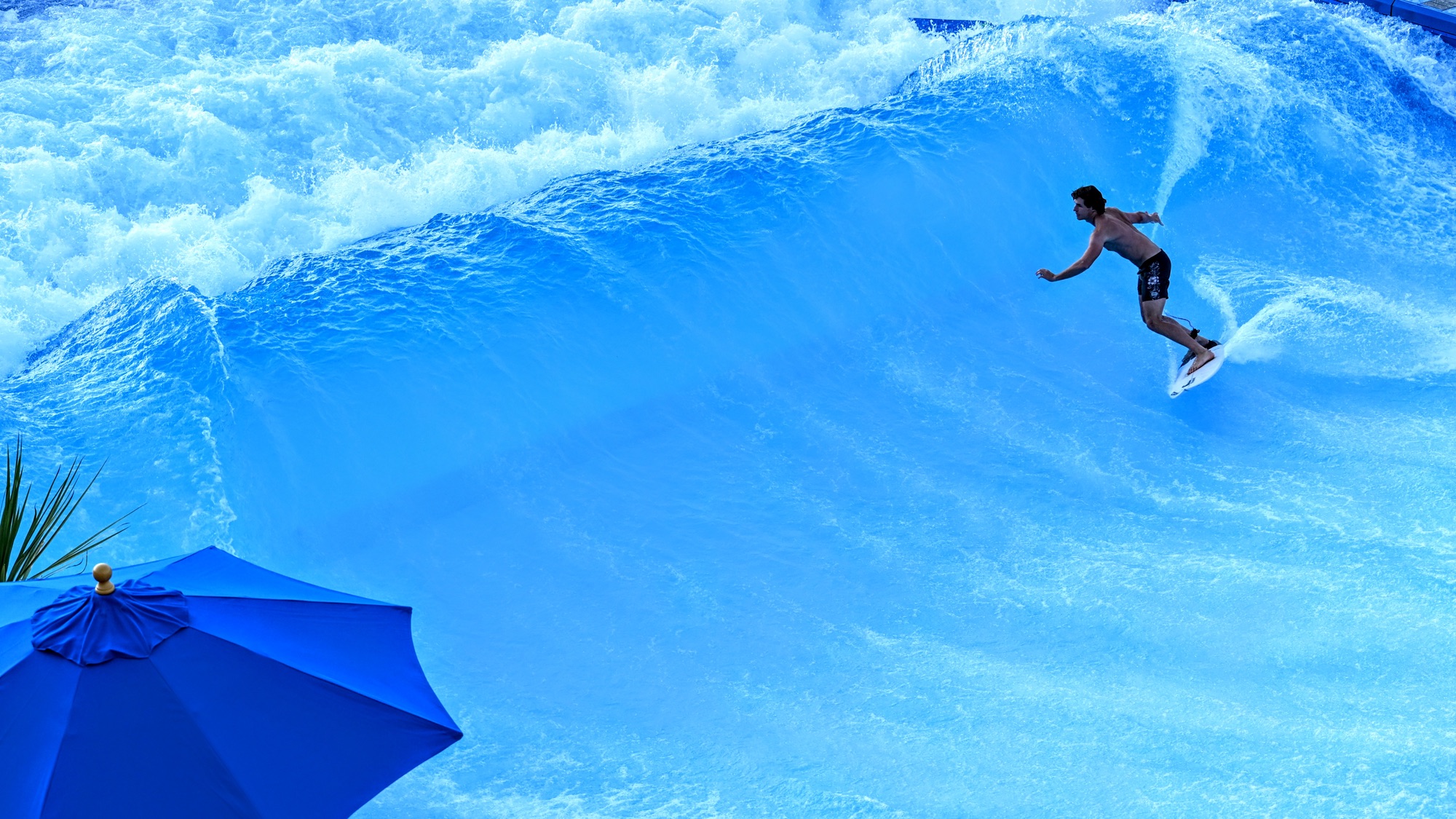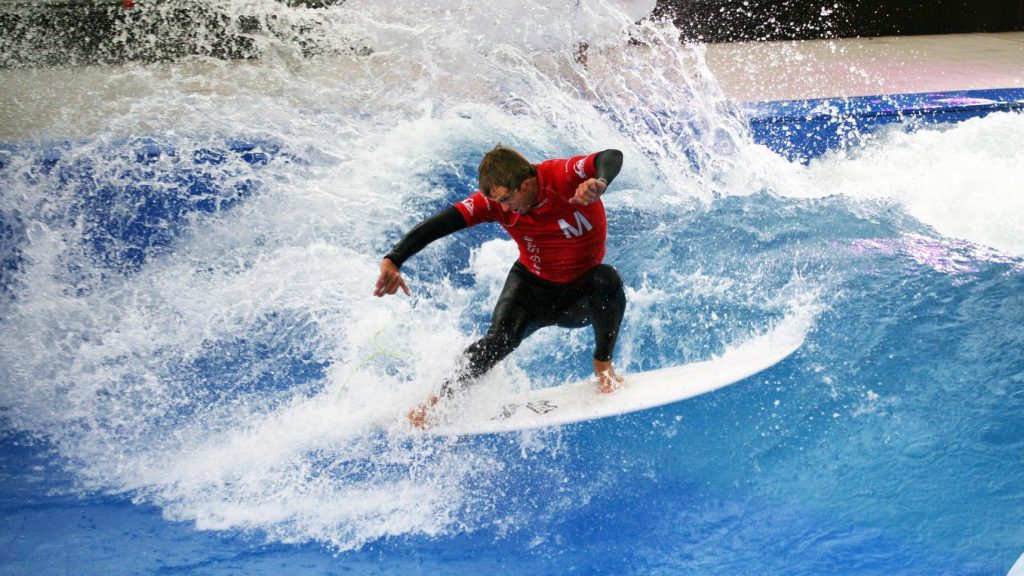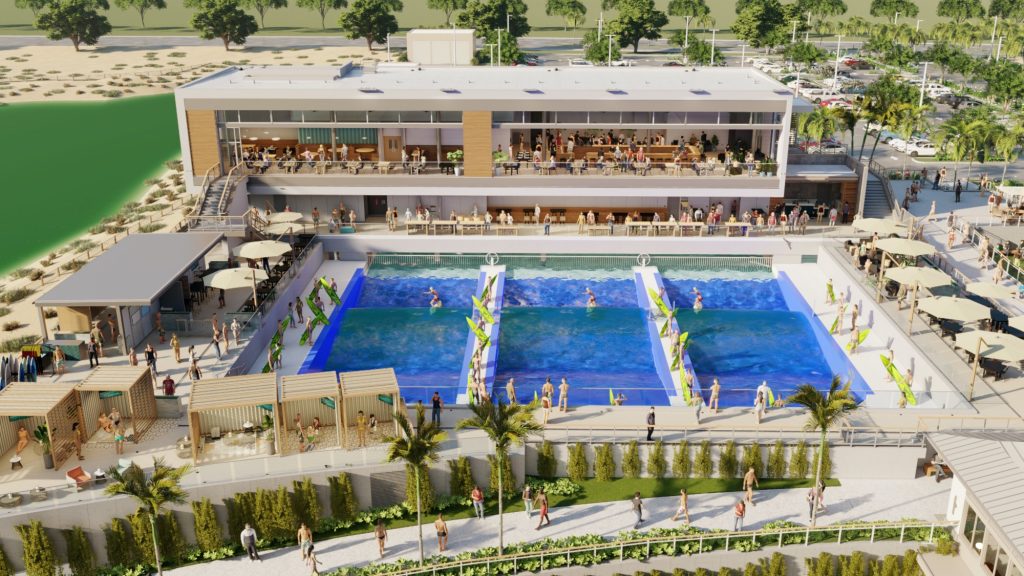Insight from Shane Beschen on new rapid wave pool sizes

With the unveiling of Wai Kai and Chelan Washington we thought it was time to revisit the river wave-inspired genre of stoke. In light of the term “standing wave pool” being absolutely zero percent exciting, in this piece we’ll try on the term “Rapid Wave Pool” for size and see how it goes (we’re open for suggestions, so please hit us back).
Despite having such an obvious function for fun – the rider surfs over rushing water within a confined space – we wanted insight from an expert. In this case, it’s Shane Beschen, one of just a handful of pro surfers able to ruffle Kelly Slater’s feathers in the ‘90s.
These days Shane is coaching, consulting and making business sense all over LinkedIn. He’s concierge to SwellMFG out of Arizona and rapid wave pool juggernaut citywave in Germany. We checked in with Shane to get an update on all things standing, err, rapid wave pool at the planned Wai Kai resort.

Most people think of a FlowRider when they hear about rapid or standing wave pools, how is the Wai Kai wave different?
The FlowRider is a few inches deep with the water moving fast, which only allows the rider to use a skiboard or bodyboard. Due to the water being so shallow people tend to slam the bottom when they fall. The citywave technology is about two feet deep and the water is moving slower, which allows for the rider to use a real surfboard with standard-size fins. This is a huge difference between the technologies and in my opinion, makes the citywave a much better product for surfers.
How is a rapid wave different from a traveling wave?
A traveling wave is caught and ridden to the beach, a standing wave stays in one place and instead or riding to the beach, you ride from side to side. The cool thing about standing waves is there is no downtime between waves. Someone is always riding!
With giant rapid waves in Washington and now Oahu, what does it mean to have a wider area to surf on?
A wider citywave like Chelan Washington and now Wai Kai Oahu will give the rider more time to go down the line, create more speed and do bigger turns. The 100-foot citywave will be similar to a point break style wave. In Wai Kai, we will also be able to divide the wave into sections during busy times to accommodate all levels at the same time.

Are the smaller rapid wave pools a thing of the past now that we have these larger venues?
The smaller citywave venues will still have a place in urban areas where space is limited and venues want to include a wave riding addition.
Wai Kai’s wave is adjustable, you can surf it as a 100-foot wide wave or break it into three smaller rapid wave pools. What is the full potential of this configuration?
The full potential of the 100-foot citywave at Wai Kai will be massive and some options are probably still yet to be discovered. I can say, it will be a totally new experience for surfers and it will be the best standing wave on the planet which will allow the opportunity for all levels of surfers to have a great time within an incredible atmosphere.
Main image shows the 50-foot wide rapid wave pool in Chelan Washington.
Related Coverage
